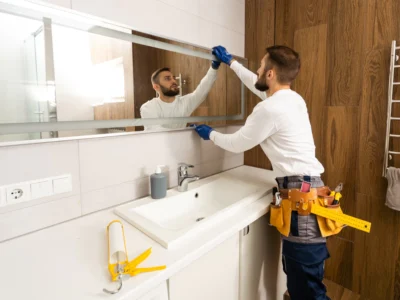Did you know that around three in five homeowners did some sort of renovation project last year? With more people spending time at home, turning it into the ideal space has become more important than ever. So how do you get the finance to do it?
There are a number of options available, some more favorable than others. Read on as we give eight things to know about home renovation financing.
1. Renovation and Improvement Loans
Renovation home loans work on the premise of what the property will be worth after renovation, to see how much the owner can borrow. With the extra amount of money, you can enhance the landscape or just add a Wiffle ball field in the backyard. Credit comes from the increase in value.
Many home improvement loans are simply personal loans or credit card-style loans that are rebranded. They will have shorter terms and higher interest rates, though they may still be suitable depending on your needs. Therefore, you need to know the distinction between a home improvement loan and a renovation loan.
Renovations loans come in a number of different types. However, the common denominator is that they all take into account the after-renovation value. This renovation loan from Plenti is a great example.
2. Consider a Home Equity Line of Credit
A Home Equity Line of Credit (HELOC) is a type of credit that works in a similar way to a card, with a revolving line of credit. It uses your home equity as collateral and can be spent on anything. You can use it for holidays, buying a new car or to build a house for chicken or anything else you see fit.
However, one of the smarter options is using it for a home renovation. Funds you take from it will add to the value of your property. As such, you are making an investment instead of spending the money on frivolous items.
Interest rates do tend to be higher than other methods of finance, so shop around for rates. Make sure you know what you want to renovate and go for the exact amount so you are not tempted to overspend.
3. Consider a Home Equity Loan
A home equity loan is very similar to a HELOC. However, it does not have a revolving credit line. It is a standard loan that you simply pay off in designated amounts.
This means you are subjected to lower interest rates than you would be with a HELOC. The loan will be calculated using the current value of your home against how much you have left on your mortgage. Essentially, the less you have left to pay, the more you can borrow.
You may get offered more than you need because of this, and it is up to you if you want to take the full amount or lower. However, it pays to make sure you only take the amount you need so you can pay the loan back quicker.
4. Personal Loans
Personal loans should be used as a last resort when it comes to home renovations. The reason for this is their high interest rates. They are better suited for smaller projects that you can pay off quickly.
That does not mean they should be ruled out entirely. If you can find a personal loan with favorable terms and use it for something that adds value to the home, by paying it back quickly, you may still make a profit.
Many contractors offer financing for customers to help fund their remodeling projects. This approach simplifies the financing process by providing customized financial solutions directly from the contractor. It often comes with competitive rates and flexible terms. Choosing this option allows you to keep your remodeling project on budget while working with a trusted partner who handles both the renovation work and financing, making everything easier.
5. Cash-Out Refinancing
Another method of financing improvements is known as cash-out refinancing. It involves getting a new mortgage that has a bigger balance than that which you already owe. When you pay the old mortgage off, you are left with excess capital, which you can use for home renovations.
The more equity you have in the home, and the less mortgage you owe, the better this works. It is particularly effective if you can get your new mortgage at a lower interest rate than the current mortgage. If you can also adjust the term to pay off the mortgage sooner, you are in a multiple-win situation.
6. Know Your Equity
The lowest rates come from having more equity in your home. If you have not had the home long and are looking at a longer mortgage, then expect to pay higher rates. However, if you have almost paid off the mortgage and have a little left, you can expect to pick and choose the best financing options.
Always aim to get lower interest rates or shorter repayment terms. Then cross-reference it against what you actually want to do. Are you doing a large remodel or just a small series of renovations?
7. How Quick Do You Need Funds?
Another consideration is how quickly you need the funds. Loan applications can take time and in some instances, you just may not have this. Your home may need immediate attention for reasons of safety, or you could have another family member on the way.
In these instances, you may be able to get a 0% credit card. You need a strong credit history, and later down the line, you can pay off the balance using a home equity loan or personal loan with a better rate.
8. Your Credit Report Matters
Like any source of finance, your credit history will matter. It will impact the amount you can borrow and the payment terms. Great credit means you can access the best interest rate for secured or unsecured loans.
Lower credit scores can result in extremely high interest rates, some as much as 35% APR. If you are not in a rush, take some time to improve your credit rating before seeking out home renovations loans.
Home Renovation Financing
The best home renovation financing comes down to your individual situation. With better equity, you will get better terms, but you can get find financing without it as well. Shop around and decide what is best for you.
This blog is just one of many handy, helpful guides on our websites. From DIY to renovation, we can help build your dream home starting today!










Comments